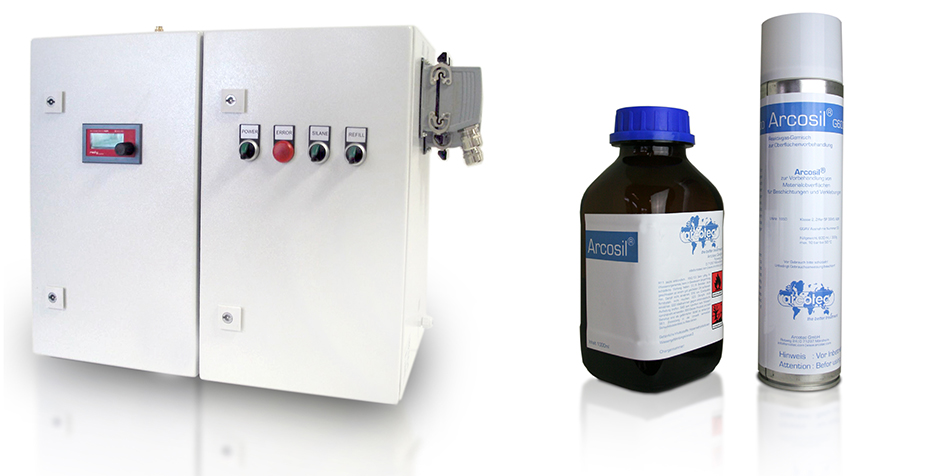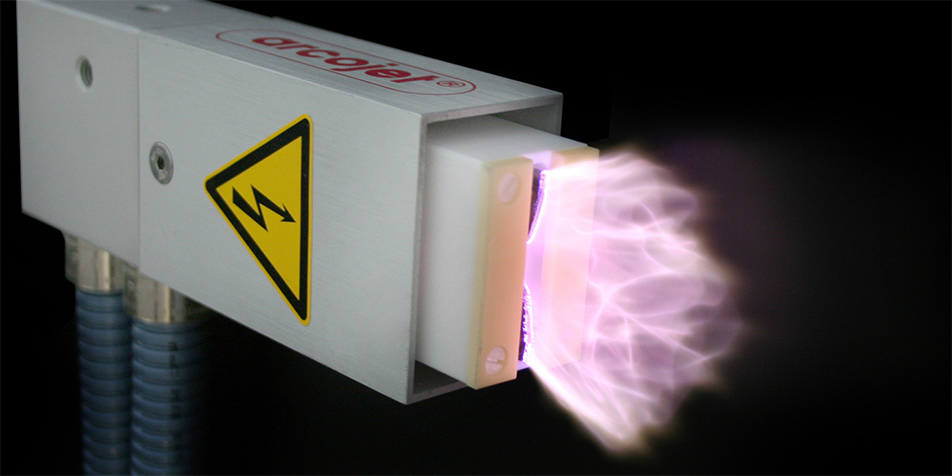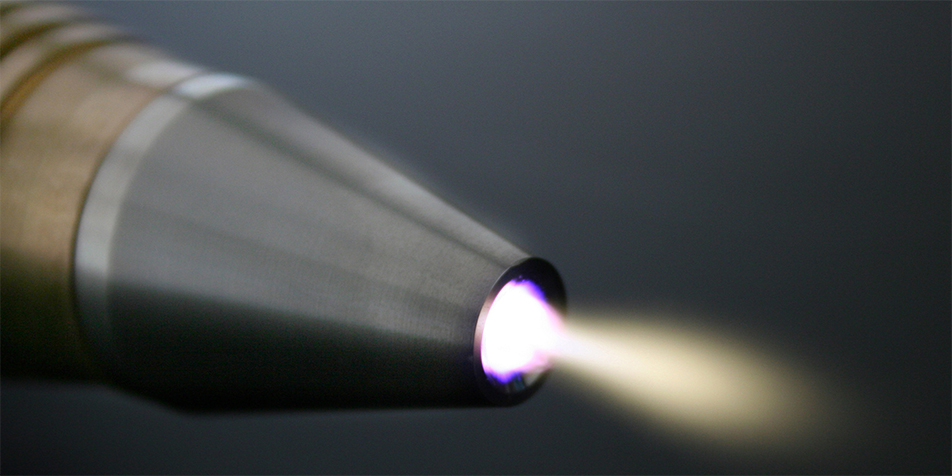

Principle
The silica coating process is a further development of the flame treatment. In this process the flame (the combustion gas/air mixture) is mixed with a volatile silane compound (arcosil® process) in a low concentration. The silane burns in the flame to silicate (SiOx, x≈2) and forms a thin, invisible layer (only a few nanometres thick) on the surface to be treated. The layer has a high surface tension and can improve the adhesion of successive finishing coats. Moreover, the silicate layer prevents the diffusion of oxygen and moisture. Thus the corrosion of metal, for example, can be largely suppressed. This process is applied in particular in instances where there are increased demands made on the adhesion of the finishing coats, e.g., moisture resistance or corrosion resistance. Excellent results are achieved on metals (e.g., aluminium, stainless steel etc), glass and also plastics. As with normal flame treatment, the best possible settings should be obtained through tests in every instance.

arcosil®
Silane Precursor: For feeding into the flame via a silane dosing unit for silica coating of surfaces



